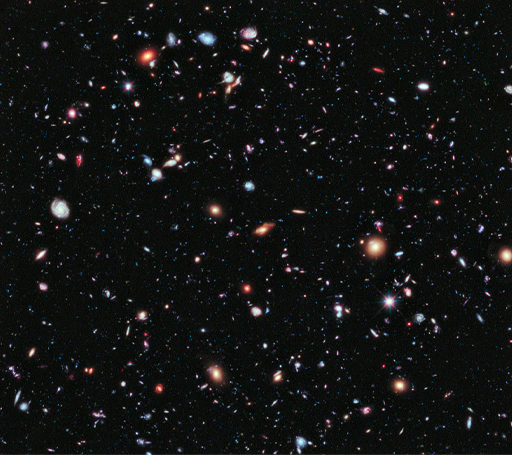4 The most distant objects
The further into space you look, the older the objects you see. The Hubble Space Telescope, an observatory that has been orbiting around the Earth since 1990, has been accumulating images of small areas of sky known as ‘deep fields’. One of these images, known as the ‘Extreme Deep Field’ (XDF), depicts an area in the constellation of Fornax, just south of Orion. (In fact, it sits within an area called the ‘Ultra Deep Field’, which is itself within a mere ‘Deep Field’!)
The XDF is a composite of over 2000 images, made over a ten-year period. The image covers a very small patch of the sky as seen from Earth (just 0.6% of the size of the Moon) which nevertheless contains an estimated 5500 galaxies. These distant galaxies are very young but they were formed hundreds of millions of years after the Big Bang. The oldest of these formed when the universe was around 450 million years old.
These galaxies are some of the most distant objects ever seen – but they’re still not at the ‘edge’ of the observable universe. What does that edge look like?

